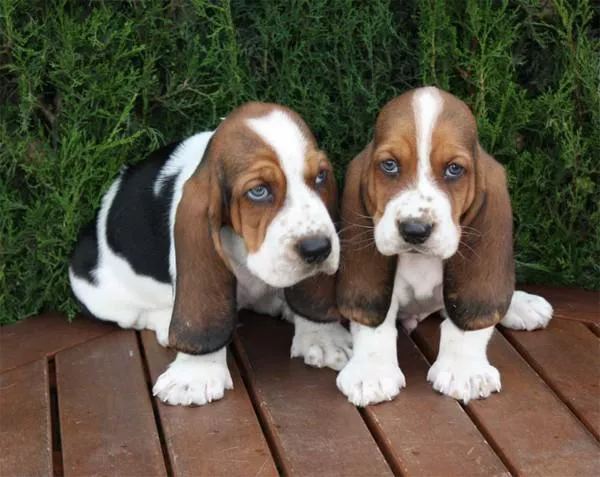Selecting the appropriate dog crate size for your Basset Hound is essential for their comfort and safety. These charming hounds may have unique physical characteristics, and choosing the right crate size ensures they have a cozy and secure space. In this guide, we’ll help you determine the ideal crate size for your Basset Hound.
I. Your Basset Hound’s Dimensions
Before choosing a crate, it’s crucial to measure your Basset Hound accurately. Here are the key measurements you need:
Length: Measure your Basset Hound from the tip of their nose to the base of their tail.
Height: Measure from the top of their head to the ground while they are standing on all fours.
II. Selecting the Appropriate Crate Size
Once you have your Basset Hound’s measurements, you can determine the crate size:
Length: The crate length should be at least your Basset Hound’s length plus 4-6 inches. This extra space allows them to stretch comfortably.
Height: The crate height should be taller than your Basset Hound’s height by 4-6 inches, ensuring they can stand up without crouching.
Width: The crate’s width should be wide enough for your Basset Hound to turn around comfortably.
III. Considering Growth and Age
Keep in mind that puppies grow quickly. If you are getting a crate for a Basset Hound puppy, consider their expected adult size. You may want to invest in a crate with a divider panel that allows you to adjust the crate’s size as your puppy grows.
IV. Crate Types
There are various crate types to choose from, including wire crates, plastic crates, and soft-sided crates. Each type has its advantages, but make sure the one you select is well-ventilated, secure, and easy to clean.
V. Additional Tips for Crate Comfort
To ensure your Basset Hound is comfortable in their crate, consider the following:
Bedding: Provide a soft and comfortable bed or blanket in the crate for them to rest on.
Toys: Include some safe and entertaining toys to keep your Basset Hound occupied.
Training: Crate training is essential. Make the crate a positive and inviting space by using treats and praise when they enter the crate willingly.
VI. Monitoring Your Basset Hound
Always keep an eye on your Basset Hound when they are in the crate. Ensure they don’t show signs of distress or anxiety while inside. The crate should be a safe and comforting place, not a source of stress.
VII. Consult with a Professional
If you have any doubts about crate sizing or training, consider consulting with a professional dog trainer or veterinarian. They can provide personalized guidance to meet your Basset Hound’s specific needs.
In conclusion, selecting the right size dog crate for your Basset Hound is essential for their comfort and well-being. Measure your Basset Hound accurately, consider their growth, and choose a crate that allows them to stand, turn around, and stretch comfortably. With the proper crate size and positive training, your Basset Hound will have a safe and secure space they can call their own.
FAQs about Basset Hounds:
1. What is the origin of the Basset Hound breed?
Basset Hounds originated in France and are believed to be descendants of larger hounds. They were selectively bred for their strong sense of smell and short stature, making them excellent scent hounds for tracking game.
2. How big do Basset Hounds get?
Adult Basset Hounds typically stand around 12 to 15 inches (30 to 38 cm) tall at the shoulder and weigh between 40 to 65 pounds (18 to 29 kg), with males often being larger than females.
3. What is the temperament of Basset Hounds?
Basset Hounds are known for their gentle, laid-back, and affectionate temperament. They are typically good-natured, friendly, and get along well with children and other pets.
4. Do Basset Hounds shed a lot?
Yes, Basset Hounds are moderate shedders and have short, dense coats. Regular brushing can help minimize shedding, but they will still shed some fur year-round.
5. Are Basset Hounds easy to train?
Basset Hounds are intelligent but can be independent and stubborn when it comes to training. They have a strong nose and may be easily distracted by scents. Patient and consistent training methods work best with this breed.
6. How much exercise do Basset Hounds need?
Despite their short legs, Basset Hounds are surprisingly active and enjoy daily walks and playtime. They have a strong sense of smell and will benefit from scent-related activities and puzzle toys.
7. Are Basset Hounds good with children and other pets?
Basset Hounds are typically good with children and other pets, especially when they are socialized from an early age. Their gentle and friendly nature makes them suitable family dogs.
8. What health issues are common in Basset Hounds?
Basset Hounds can be prone to certain health issues, including hip dysplasia, ear infections (due to their long ears), obesity (due to their love for food), and issues related to their elongated spines. Regular veterinary check-ups are important.
9. How long do Basset Hounds usually live?
The average lifespan of a Basset Hound is typically around 10 to 12 years. Providing them with a balanced diet, regular exercise, and proper veterinary care can contribute to their longevity.
10. Are Basset Hounds good watchdogs?
– Basset Hounds are not known for their guarding abilities. They are generally friendly and may be more interested in following their nose than protecting the home. However, their distinctive baying bark can alert you to the presence of strangers.
11. Do Basset Hounds drool a lot?
Yes, Basset Hounds are known for their drooling, especially after eating or drinking. Their loose lips and long ears can contribute to this characteristic.


